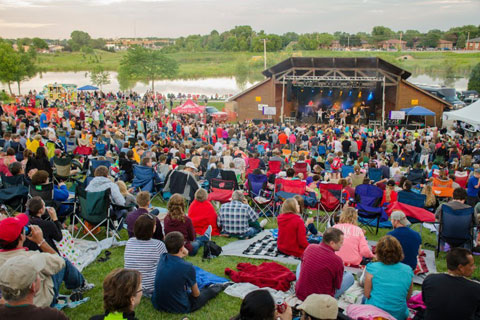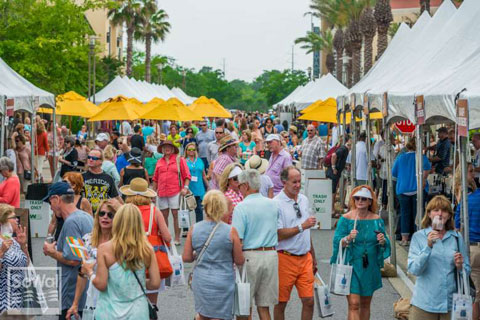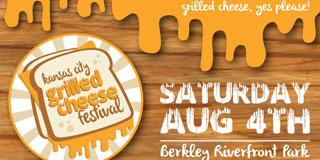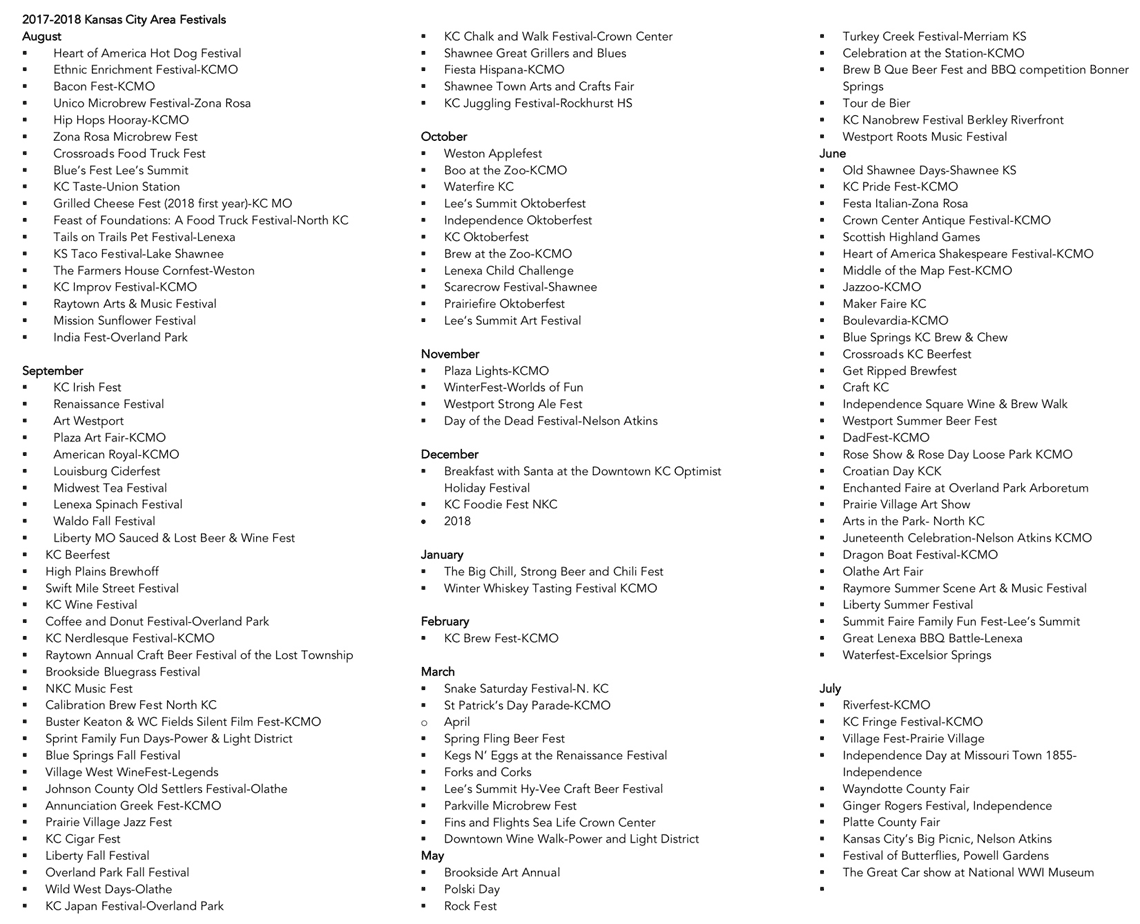
Vol. XVIII, No. 7, August 2018
- Editor's corner
- Brailling the leisure culture
- Structure changes responsible for baby bust?
- The rise of festival competition to community-based entertainment venues
- Americans' diets are diverse
- The rise of agritainment/agritourism
- The changing composition of bowlers
- Who is "middle class" and "upper income"?
- What we eat has changed
- Digital screen time on the increase
The rise of festival competition to community-based entertainment venues
In our May-June Leisure eNewsletter this year, we discussed the multiple reasons for the demise of repeat appeal at FECs and many other types of community-leisure venues (CLVs).
Among the many factors for the declining repeat appeal at FECs and CLVs (check out the article) is Americans' desire to have new experiences. It's all about a culture of novelty seeking and the pursuit of new, unique and sharable out-of-home experiences.
Evolutionary anthropology finds that evolution has resulted in novelty being something that humans crave. The desire for novelty, to try something new, is rooted in enabling us to learn something new about how to survive. Novelty, if it's something new, triggers the production of dopamine, which, in turn, increases a person's motivation to act.
Our priorities have changed for what we pursue as new. We are becoming less materialistic, choosing to spend our money on experiences rather than stuff. In today's experience economy, we no longer collect new stuff to define who we are and for status, to “Keep up with the Jones.” We now collect new and memorable experiences to add to our Experiential CVs that we share on social media to reflect who we are and to gain social capital and bragging rights.

For many people, especially the twenty- and thirty-somethings, if an experience isn't Instagrammable, it's not worth going to. The vast majority of Americans now have the desire for adventure and discovery when it comes to experiences. With so many out-of-home leisure options, rather than repeat same old, same old, we quickly move on to new ones to add to our Experiential CVs.
In that article we mentioned the large increase to all the out-of-home options people have today compared to in the past that can be added to the Experiential CVs. Among those are festivals of all types including, wine, beer, food, art, music and ethnic. Festivals have an advantage over all-year venues, as they are unique experiences and limited time offerings (LTOs) where FOMO (fear of missing out) drives attendance, as being connected on social media and sharing important moments in their lives has increased the need for “being there.” Festivals also have the appeal of being social gatherings where FOMO also comes into play, as groups fear missing out on important social interactions.
A September 2017 survey of UK Millennials, whose entertainment culture is very similar to that in the U.S., found that there is a move away from more traditional forms of entertainment. Tickets to events and festivals now represent almost half (47%) of all the money they spend going out. 62% went to at least one event or festival in the past year, and of those that did, they went to an average of 30 different ones in the prior twelve months.
80% of UK Millennials said they would sacrifice something in their lives to fund going to more festivals/events. One in three would be willing to sell their possessions on eBay to pay for a festival ticket. Even newer passions are not safe - one in eight would give up their Netflix or Spotify premium account and one in six Uber. One in ten would even stop buying birthday or Christmas presents to pay for a festival ticket.
That survey found that food-based festivals are where they're most willing to get out of their comfort zones and try something new, ideally with others (often their partner or in the case of Millennial parents, with their kids). The future intentions of Millennials were pretty clear - go to more festivals! Half of Millennials say they want to attend more music festivals, and four in ten would like to go to more food festivals. They're willing to make sacrifices in their day to day eating habits to pay to attend more food-based events; four in ten are willing to give up take-away food and one in three would take a packed lunch to work/college to save money.


Attendance at festivals is up in the U.S. as well. 29% of U.S. Millennials attended a music festival in the 12 months ending April 2017, up from only 17% in 2014. That's nearly a doubling of the attendance rate in just three years.
Our company's own national surveys found that adults in $100,000+ incomes households (21% of all households) are 58% of all festival attendees. And they are not limited to just Millennials, but older adults as well. This socioeconomic of course is also the prime target market for FECs and other types of CLVs, so festivals are definitely competition.

The number of festivals is on the increase. In the UK, the number doubled over the past decade to more than a thousand. How many festival options are there today in the U.S.? To find out how many are available each year in a typical U.S. city, we researched all the Kansas City metropolitan area festivals that took place during the past year (August 2017-July 2018). We were surprised to find 133 and we probably missed a dozen or more that weren't identified as festivals but were and we didn't include live events that are similar in character to festivals. Plus, new festivals are popping up every month, such as this month's first time Grilled Cheese Festival. If you find the number of festivals hard to believe, here's the list.

The demand for festivals has skyrocketed, especially among younger adults who continue to thirst for unique and buzz-worthly experiences and has led to a new travel category called Festival Tourism. “Today's global travelers are willing to spend that extra penny to experience the magic of seasonal, music, cultural, and even shopping festivals,” said Mamoun Hmedan, Wego managing director for the MENA region and India. “It's the Gen-Y's penchant for unique and authentic cultural encounters and human- interactions that drives their interest to attend festivals - [even] halfway across the world.” Momoun says that festivals are now one of the greatest travel motivators of recent times.
Implications for FECs and CLVs
The classic FEC business model based upon repeat business is being totally disrupted by consumers' desire to continually enjoy new unique experiences and grow their Experiential CVs with all the many out-of-home leisure options, including festivals and other limited time unique events. Rather than repeat an experience - been there, done that - consumers are moving on to new ones, and festivals are now one of their top choices. Today, for the out-of-home leisure and entertainment industry, it's a completely new ball game with a new set of rules that requires new business models.
Strategies
To succeed in today's highly competitive entertainment landscape requires new strategies. Offering one or a combination of entertainment attractions and counting on consumers' desires to repeat the experience, whether it is bowling, go-karts, laser tag, or whatever, and no matter how good the quality of the attraction might, is no longer a sustainable business formula for success. The concept that an attraction can drive repeat visits for multiple years no longer works.
The first new rule is that the experience needs to constantly change and/or there needs to be new and unique ones to get people to return. One way to drive repeat visits is with special limited-time events, no different that the LTOs that restaurants now use to drive visits from regulars as well as new customers and the unique limited-time appeal of festivals. In fact, many of the new model and successful CLVs are using food and drink LTOs and limited-time special events as one of their key attendance drivers.
Vol. XVIII, No. 7, August 2018
- Editor's corner
- Brailling the leisure culture
- Structure changes responsible for baby bust?
- The rise of festival competition to community-based entertainment venues
- Americans' diets are diverse
- The rise of agritainment/agritourism
- The changing composition of bowlers
- Who is "middle class" and "upper income"?
- What we eat has changed
- Digital screen time on the increase


